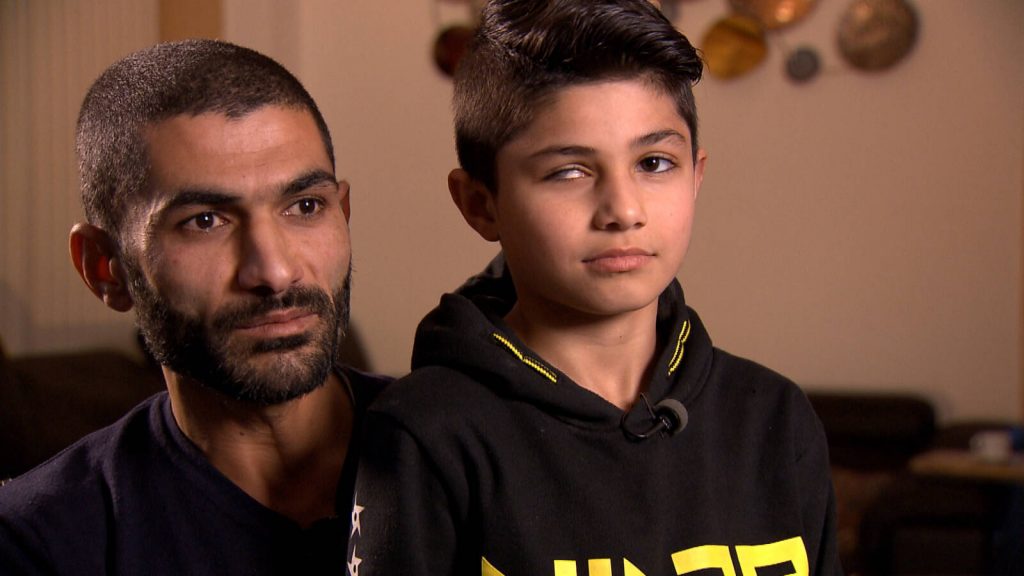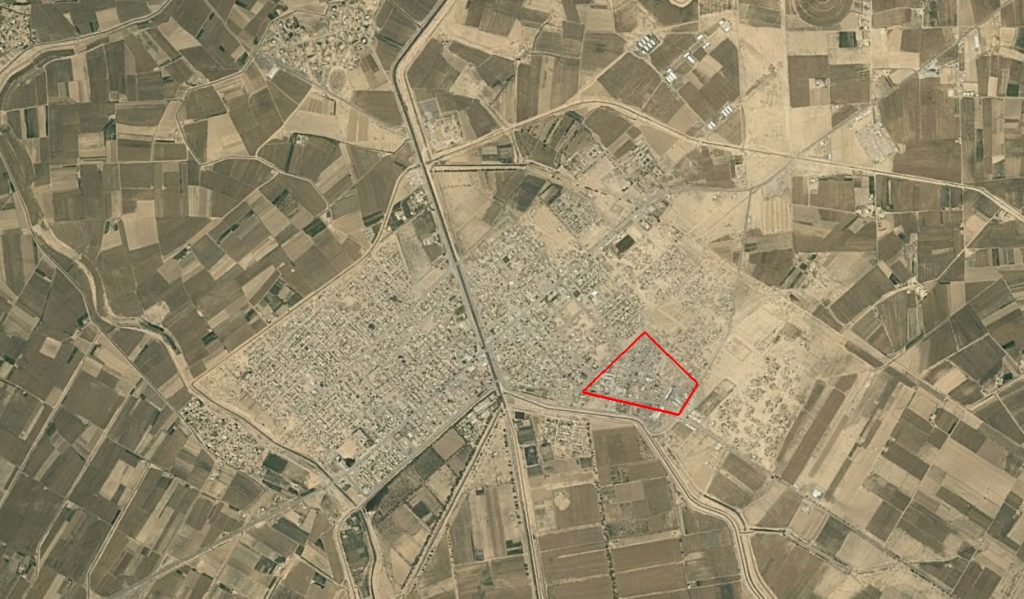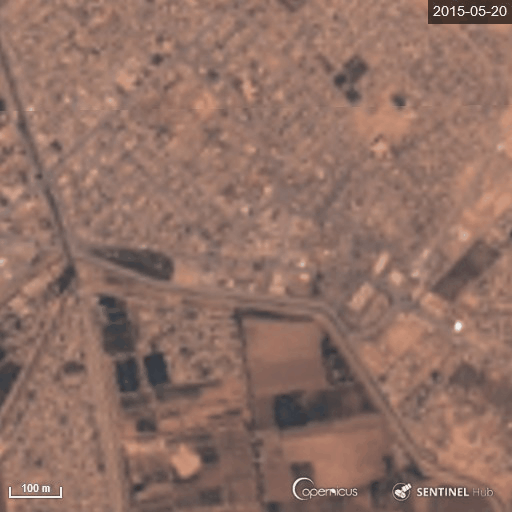Incident Code
Incident Date
Location
Geolocation
Geolocation
Airwars Assessment
(Previous Incident Code: I049)
A Coalition airstrike on an Islamic State depot levelled a significant number of buildings, killing an estimated 85 civilians and a large number of militants. A large supply of TNT explosive detonated after the IED-making facility was struck. Bas News described the attack as one of the worst mass casualty incidents in Iraq since the 2003 invasion.
Following the publication of a major investigation by Dutch media NOS and NRC in October 2019, which claimed that the Netherlands had been responsible for the incident, the Dutch Ministry of Defence finally took public responsibility for the airstrike on November 4th, 2019.
The head of Kirkuk’s Arab Council, Mohammed Khalil al-Jubouri, at the time placed the number of dead and injured civilians at 150. The Iraqi Revolution site claimed that 70 civilians had died, with more than 100 injured. Rudaw also reported 70 killed, describing 26 children and 22 women among the dead. Airwars updated our initial casualty estimate of 70 in light of new findings by Al-Ghad League for Woman and Child Care, PAX and the Intimacies of Remote Warfare (IRW) project at Utrecht University, in their April 2022 report ‘After the Strike’, based on field research and interviews with more than a hundred victims and witnesses.
Local sheikh Abdallah al-Jubouri told Al-Araby news agency at the time that “several international coalition airstrikes hit the district. The losses were made worse by there being no ambulances or other means to rescue victims.” He added that “This is the single worse airstrike that has targeted civilians in al-Hawija; eight months ago we were getting hit by Iraqi army warplanes but that has stopped. The international coalition has committed a civilian massacre today and Islamic State and its weapons are the reason.“
Eyewitness Hassan Mahmoud al-Jubbouri told Reuters that the area looked as if it had been hit by a nuclear bomb, and described pulling the bodies of a family of six from the rubble. Only one victim has so far been named – Kherallah Ahmed Al Saleh Al Thawabi – described as the owner of a car maintenance shop in the district.
Bizarrely, in the immediate wake of the strike, a Coalition official told Reuters: “Since we started airstrikes in August last year in Iraq, I have difficulty thinking of any civilian casualties in Iraq, and for thousands of sorties that is good. One is clearly too many.“
Among as many as 100 militants also reported killed was Islamic State’s local police chief, named as Jassim Shukur. “The [Coalition] warplanes also bombarded two other sub-districts around Hawija and many other ISIS militants who were with the police chief were killed by the bombardment,” Iraqi official Sarhad Qadir told Rudaw.
In a later January 2016 report, the United Nations Assistance Mission in Iraq (UNAMI) noted that US officials had confirmed carrying out the Hawijah attack though went on to state: “Pictures and videos have emerged in media and online showing an area purporting to be the blast site that has been almost completely flattened. UNAMI/OHCHR was not able to verify the authenticity of the photos or the videos, nor the number of civilian casualties.”
In October 2019, Dutch media NOS and NRC published a major investigation in which they alleged that Dutch F-16s had carried out the attack. This also revealed that chief Coalition spokesman Colonel Ryan had confirmed to reporters in December 2018 that at least 70 civilians had in fact died – though this had not been officially reported out by the CJTF civilian casualty cell. This statement was later withdrawn by the Coalition on December 5th 2019, asserting that they were no longer able to determine the exact amount of civilian casualties in the incident.
However, past and present officials did confirm to NRC that 70 civilian deaths had been privately counted for Hawijah by the Coalition for at least 18 months – suggesting that the Dutch government may have pressured the Coalition to withdraw its initial estimate.
On November 4th 2019, the Dutch Ministry of Defence took public responsibility for the airstrike. This stirred a public and parliamentary debate in the Netherlands on transparency and accountability regarding civilian casualties as a result of Dutch airstrikes. As a result, Dutch Minister of Defence Ank Bijleveld promised significant transparency improvements and said she was looking into possibilities for voluntary compensation for victims.
On November 28th 2019, Dutch newspaper NRC wrote that according to locals, the estimate of 70 civilian deaths was an absolute minimum number. Civilians stated that “almost everyone in Hawijah lost neighbours or family members [in the incident]”.
NRC stated that the Dutch Socialist Party, after seeking contact with the Iraqi Communist Party (ICP), had local Mohammad ‘Abu Louis’ Shadid Hamad Dawoud collect the names of victims. With volunteers, Abu Louis went from house to house in the affected areas to find eyewitnesses of the event in 2015. According to Abu Louis, there were “62 people killed, including 36 children and 13 women, 822 wounded, 70 destroyed houses, 375 cars total loss”. 405 of the injured were registered in the hospital. The other 417 did not have any permanent injuries.
Abu Louis’ own nephew Homan (15 years old) was killed after debris hit him in the stomach.
On December 3rd, 2019, the Dutch parliament passed a motion which called on the government “to make every effort, where possible in cooperation with NGOs, UN and local authorities, to conduct further investigations on civilian victims as a result of Dutch actions in Hawija”.
In February 2020, the Dutch Ministry of Defence released previously classified documents about the airstrike, including Defensie’s own investigation after several FOIA requests by both Airwars and Dutch media. The documents revealed that the Dutch red cardholder, the military official with a potential veto over airstrikes, was aware before the strike that the risk to civilians could be created than that the Collateral Damage Estimate (CDE) indicated.
Related documents to the case by the Public’s Prosecutors office (OM) were also released, revealing that the OM’s investigation into Hawijah only started nine months after the event and that it was not until 15 months later that the pilots were heard for the first time.
In March 2020, Airwars reported, based on information provided by a senior (non-Dutch) military official, that at least one other Coalition country had refused to conduct the Hawijah strike, implying that the potential risk to civilians was expected to be too high.
A month later, the US government released its investigation into the airstrike after a judicial procedure following an unanswered FOIA request by NRC and NOS. The documents revealed that US officials were aware that the 2015 Dutch airstrike on Hawijah posed a threat to civilians. Four CIA informants had warned the Coalition about civilians living near the ISIS IED factory, as reported by NOS. Furthermore, the Coalition amended its targeting development process. In the future, the Coalition would have to do further in-depth investigation into possible secondary explosions in densely populated areas.
On April 29th, 2020, human rights lawyer Liesbeth Zegveld filed a claim in name of 47 Iraqi’s with the Dutch Ministry of Defence. Some of her clients were severely injured in the airstrike and/or suffered material losses, others lost their relatives. Among her clients are the relatives of Ahmad Shujaá Moeshin, who was working as a security guard in a car showroom on an industrial estate, a 100 metres from the ISIS IED factory, during the night of June 2nd to June 3rd. A few days after the airstrike, Moeshin died of his injuries.
On May 14th, 2020, a fourth Dutch parliamentary debate on the case took place. The Dutch Red Card Holder had not received information about the CIA warnings and the American doubts on the risks for civilians before giving a green light to the airstrike. During the debate, Minister of Defence Ank Bijleveld stated that there should be better arrangements on information sharing between the Coalition and the Netherlands.
Victims
Individuals


Key Information
Geolocation Notes
Reports of the incident mention the city of Al Hawija (الحويجة), Kirkuk province, specifically the “city centre” area and the “industrial district area Bahoijh” (الحي الصناعي بالحويجة). The majority of reports monitored by Airwars state that the incident occurred at night, most likely closely after midnight on Wednesday, June 3rd. There were conflicting reports – on Thursday, June 4th 2015, bas news stated that the incident occurred on “Wednesday evening” (June 3rd, 2015). On June 5th, 2015, alquds quoted a member of the Security Committee in the Kirkuk provincial council, Mohammed Jubouri, as saying a ”French aircraft bombed late on Thursday, a bomb manufacturing plant belonging to the ‘State’ in the district of Hawija.” Reuters reported “in a statement on Wednesday, the Coalition said an airstrike targeted a ‘vehicle-borne improvised explosive device facility’ in Hawija between 8 am on June 2 and 8 am the following day” Prior to the Coalition releasing the MGRS for this incident, Airwars had geolocated it to the nearest neighbourhood/area at 35.323474, 43.78453.

Industrial district in the city of Al Hawija (الحويجة)
Imagery: © 2018 Google

Landsat 8 image of Hawija showing blast area and large-scale destruction Landsat 8 image of Hawija showing blast area and large-scale destruction
Date taken: June 5, 2015
Resolution: 30 m
Imagery: © 2018 USGS

Stills from an Al Jazeera report (Daesh video). Published on Jun. 11th, 2015 (one week after the incident).
Date taken: June 11, 2015
Imagery: © 2018 Al Jazeera

Stills from an Al Jazeera report (Daesh video). Published on Jun. 11th, 2015 (one week after the incident).
Date taken: June 11, 2015
Imagery: © 2018 Al Jazeera

Stills from an Al Jazeera report (Daesh video). Published on Jun. 11th, 2015 (one week after the incident).
Date taken: June 11, 2018
Imagery: © 2018 Al Jazeera

Stills from an Al Jazeera report (Daesh video). Published on Jun. 11th, 2015 (one week after the incident).
Date taken: November 6, 2015
Imagery: © 2018 Al Jazeera
